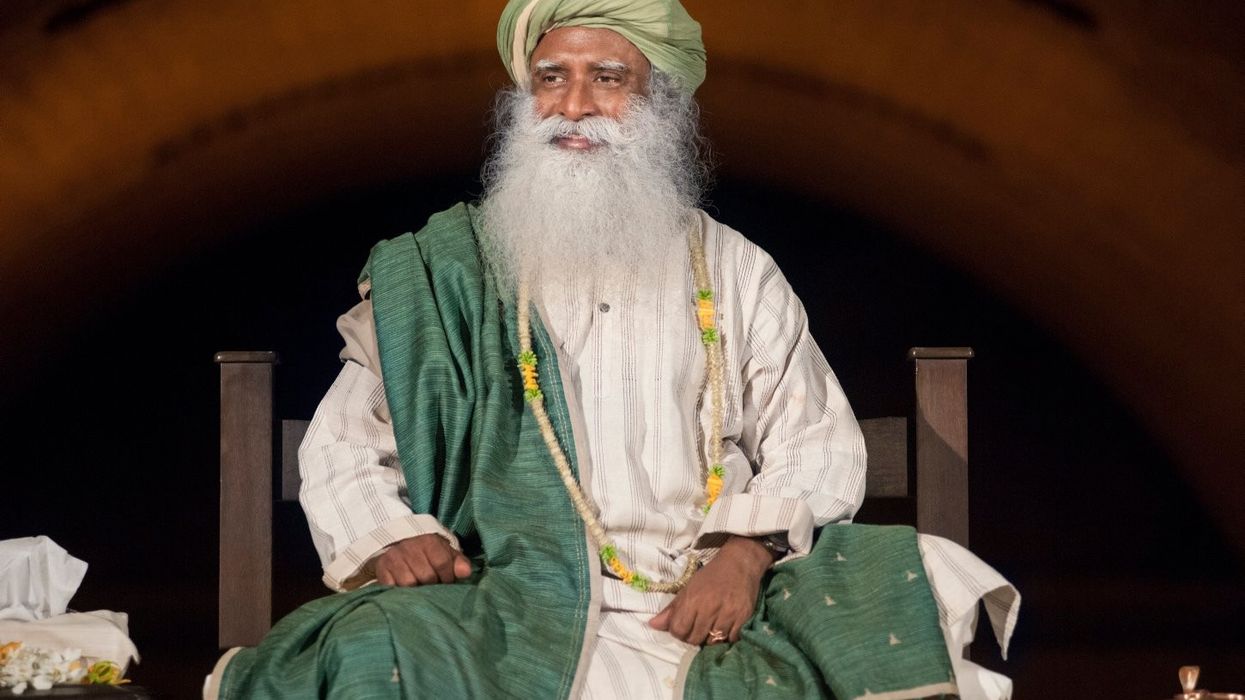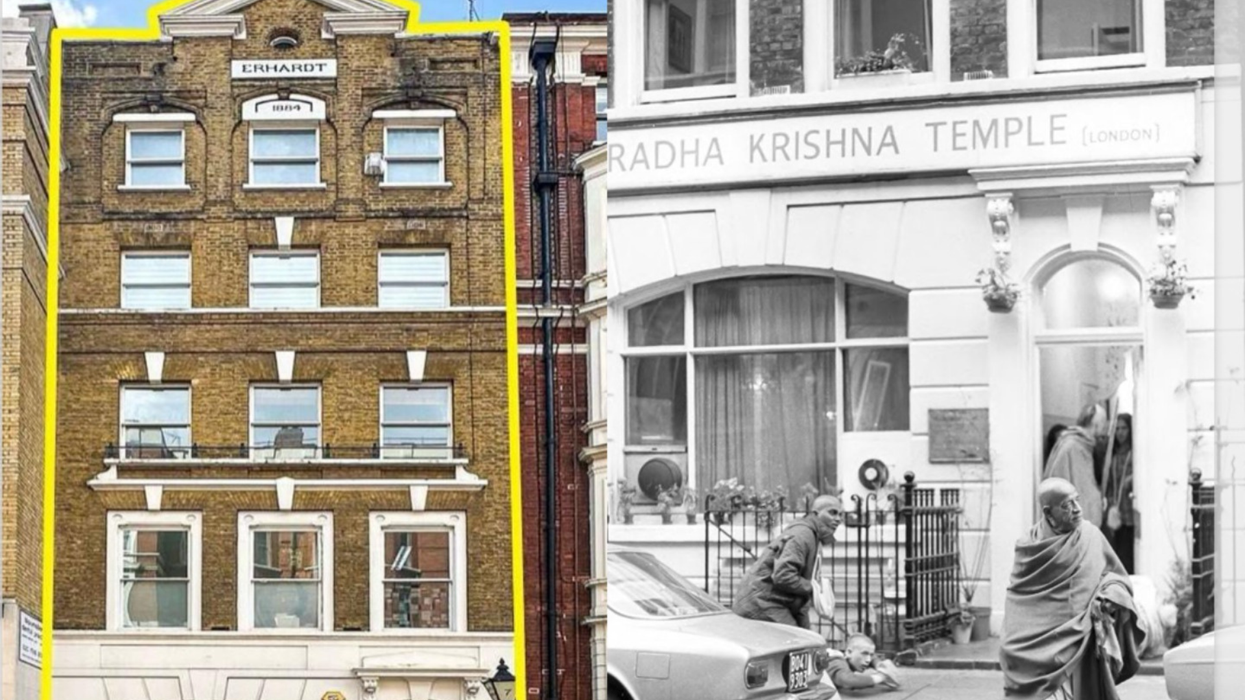“SEE, I lay a stone in Zion, a tested stone, a precious cornerstone, a sure foundation; the one who believes will never be shaken” (Isaiah 28:16).
What compels humans to see god in stone and to build majestic stone abodes for the divine? If marble stones could speak, they would sing from the depths of the human psyche some of the highest aspirations of the human soul.
Since time immemorial, civilizations have built monuments to celebrate their fundamental divine impulse – the Egyptian pyramids, Jewish temples, French cathedrals, Islamic mosques – all reaching for the heavens, trying to touch the hands of gods or goddesses.
On October 18, 2023, in a swampy farmland in Robbinsville, New Jersey (near Princeton), a Hindu place of worship, the BAPS Swaminarayan Akshardham, opened with similar grandeur and longstanding commitment to a culture of seva or selfless service.
Yogi Trivedi told me he has been contemplating the 189-foot-tall mahashikhar or central steeple of the Akshardham temple. As a scholar of religion and a journalist who has taught at Columbia University, he has dedicated his life to thinking about the mission of the Swaminarayan movement and their Hindu temples.
Yogi Trivedi has written, “Each stone has a song to share – stories of selfless service, harmony, and devotion. I heard the stones calling out to Bhagwan Swaminarayan and the other Hindu deities to whom this mandir is dedicated. I heard the stones calling out to the diverse group of volunteers and sadhus from around the world who helped complete it while putting their education, careers and family matters on hold.”
The Vedic parable of a boy who goes to his guru to seek enlightenment describes how the guru gives the boy 400 cows to herd and instructs him to return when there are 1,000 cows. You will find enlightenment, the guru tells him. The moral is that he must serve selflessly, not knowing what’s in it for him. He will learn something about the meaning of life and self-transcendence. Such is the story of the Akshardham temple. People serve without an expectation of reward. They give to the larger community to make it grow.
“Ask not what your country can do for you, ask what you can do for your country,” said John F Kennedy, the first Catholic president of the United States.

The BAPS temple implores all Americans to do the same. Along the walls of the temple are carved images of Abraham Lincoln and Martin Luther King Jr, the shining martyrs of the oldest constitutional democracy.
Seva permeates many of the inter-related Hindu faiths, such as Sikhism, Jainism and Buddhism. It means to serve without expectation for rewards, to serve god or humanity. Seva is the highest form of action or karma, seen as part of one’s righteous duty or dharma in order to achieve moksha or liberation.
In the Bhagvad Gita, Krishna urges Arjuna to perform his duty without any desire for returns. In the modern context, karma yoga has become somewhat synonymous with volunteerism.
This seva is the subtle foundation of Hindu mandirs and, in particular, the Swaminarayan movement.
The historical roots of the Swaminarayan movement stretch back to the late 1700s and early 1800s when the British with their East India Company were actively duelling with Hindu feudal chieftains and Mughal monarchs for the control of India. Bhagwan Swaminarayan (April 3, 1781-June 1, 1830), also known as Sahajanand Swami, became a yogi and an ascetic, believed to be a manifestation of the divine around whom the Swaminarayan movement flourished.

In 1800, Bhagwan Swaminarayan’s guru initiated him and gave him leadership of the religious community, a continuous monastic order for more than two centuries. Partly in response to the British claims that Hinduism was world-negating, the Swaminarayan movement stressed the importance of service or seva as deep engagement with the social world, alongside the practice of yogic asceticism.
The destabilising influences of European colonialism, the disruption of syncretism between Hinduism and Islam, and the rise of new religious sects such as Shaktism, Jainism, and Tantric cults may have given the impetus to the monastic asceticism which kept Hindu practices from degrading further.
The reform movements that emerged in India at the end of the medieval or early modern period strategically negotiated with the British and the Mughals with varying degrees of success.
In fact, the first BAPS Swaminarayan temple in Ahmedabad was built on a land grant from the British Imperial government, and Bhagwan Swaminarayan himself embraced all other faith and social communities, including Christians, Muslims, Parsis, and even those often unnoticed by the rest of society, the dalits. He built six temples during his lifetime, and led reforms for the poor, women and different caste groups.

Today, the BAPS Swaminarayan movement is a transnational network of thousands of Hindu temples, actively involved in social service in the local communities.
Savita and Soma Patel had purchased a beachfront property in Hawaii for their retirement, but when they heard of the construction of the new Hindu temple in New Jersey, home to one of the largest south Asian communities, they decided to change their plans and moved to Central Jersey to help build the temple.
Satish Jangid, a skilled sculptor of wood and stone crafts, had rarely travelled outside of his home district of Rajasthan. But when he got the opportunity to contribute to what was once considered a dying art, he took up the challenge. He worked on the marble pillars and carved statues and is one of the artisan volunteers or Vishwakarma sculptors, named after the Hindu deity of architecture.
During the Covid-19 pandemic, the Hindu temple still under construction, was active in administering 40,000 vaccines free of charge and donated 170,000 PPE items. It also contributed almost a million dollars to local healthcare and community organisations.

The effects of seva contribute not just to the community, but also to the individuals who serve. Many of the young men and women who helped build the temple speak of their growth and development within and without – a confidence boost, skillset development as well as a spiritual centeredness.
The largest Hindu place of worship outside of India is an architectural landmark. With contributions from 12,500 volunteers, it is a tribute to the cultural values of seva or selfless service in the spiritual, cultural and social realms.
Dinesh Sharma is a director and chief research officer at Steam Works Studio, an edtech venture in Princeton, NJ, and a faculty member at Fordham University and NYU.













